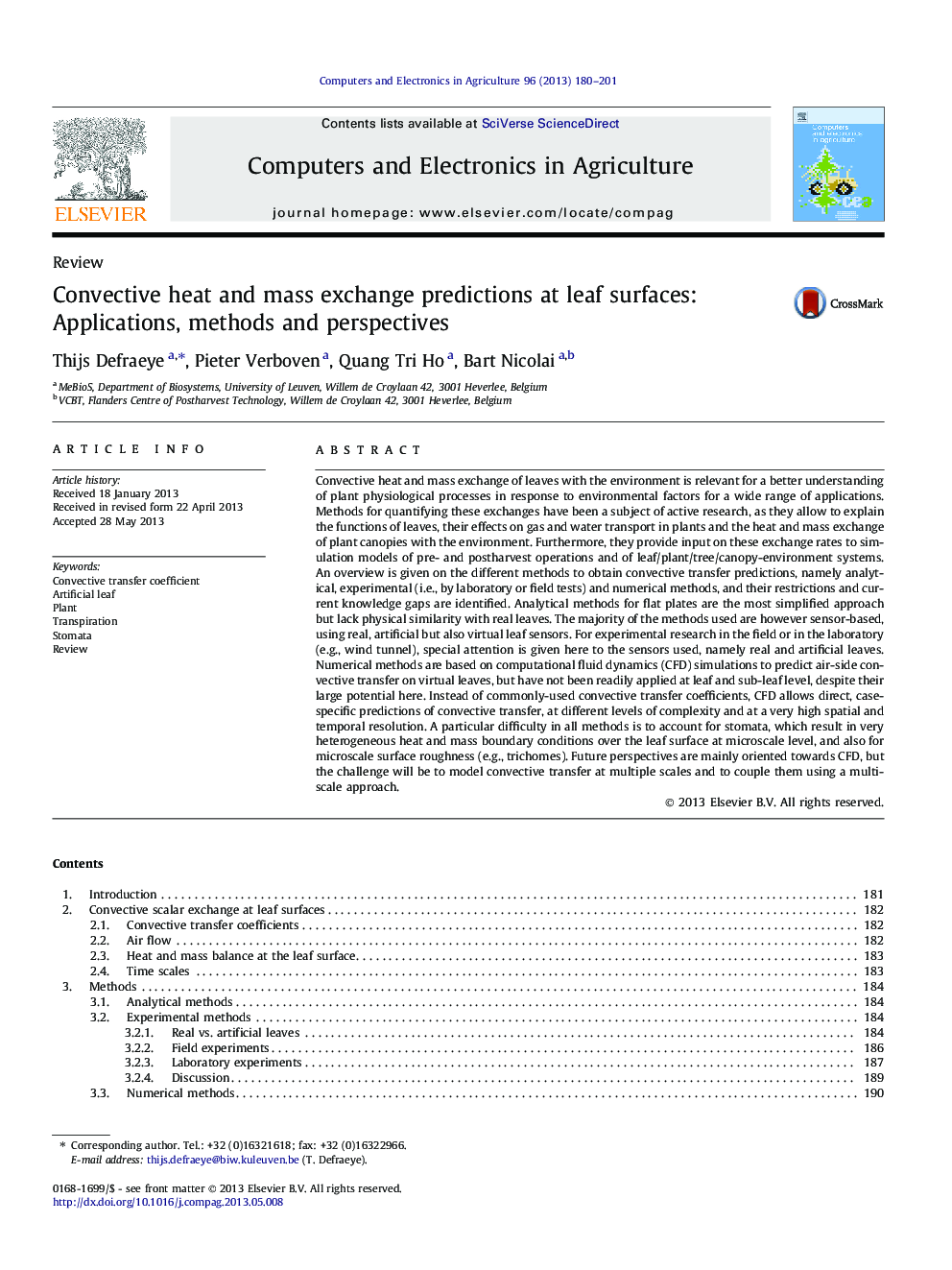| کد مقاله | کد نشریه | سال انتشار | مقاله انگلیسی | نسخه تمام متن |
|---|---|---|---|---|
| 84391 | 158879 | 2013 | 22 صفحه PDF | دانلود رایگان |

• Analytical methods for plates are simple but lack physical similarity with real leaves.
• Experimental methods rely both on real leaves and artificial leaf sensors.
• Numerical methods have not been readily applied at leaf and sub-leaf level.
• Methods often have difficulties in accounting for heterogeneity (stomata, trichomes).
• Future perspectives are towards numerical modelling, using multiscale approaches.
Convective heat and mass exchange of leaves with the environment is relevant for a better understanding of plant physiological processes in response to environmental factors for a wide range of applications. Methods for quantifying these exchanges have been a subject of active research, as they allow to explain the functions of leaves, their effects on gas and water transport in plants and the heat and mass exchange of plant canopies with the environment. Furthermore, they provide input on these exchange rates to simulation models of pre- and postharvest operations and of leaf/plant/tree/canopy-environment systems. An overview is given on the different methods to obtain convective transfer predictions, namely analytical, experimental (i.e., by laboratory or field tests) and numerical methods, and their restrictions and current knowledge gaps are identified. Analytical methods for flat plates are the most simplified approach but lack physical similarity with real leaves. The majority of the methods used are however sensor-based, using real, artificial but also virtual leaf sensors. For experimental research in the field or in the laboratory (e.g., wind tunnel), special attention is given here to the sensors used, namely real and artificial leaves. Numerical methods are based on computational fluid dynamics (CFD) simulations to predict air-side convective transfer on virtual leaves, but have not been readily applied at leaf and sub-leaf level, despite their large potential here. Instead of commonly-used convective transfer coefficients, CFD allows direct, case-specific predictions of convective transfer, at different levels of complexity and at a very high spatial and temporal resolution. A particular difficulty in all methods is to account for stomata, which result in very heterogeneous heat and mass boundary conditions over the leaf surface at microscale level, and also for microscale surface roughness (e.g., trichomes). Future perspectives are mainly oriented towards CFD, but the challenge will be to model convective transfer at multiple scales and to couple them using a multiscale approach.
Journal: Computers and Electronics in Agriculture - Volume 96, August 2013, Pages 180–201